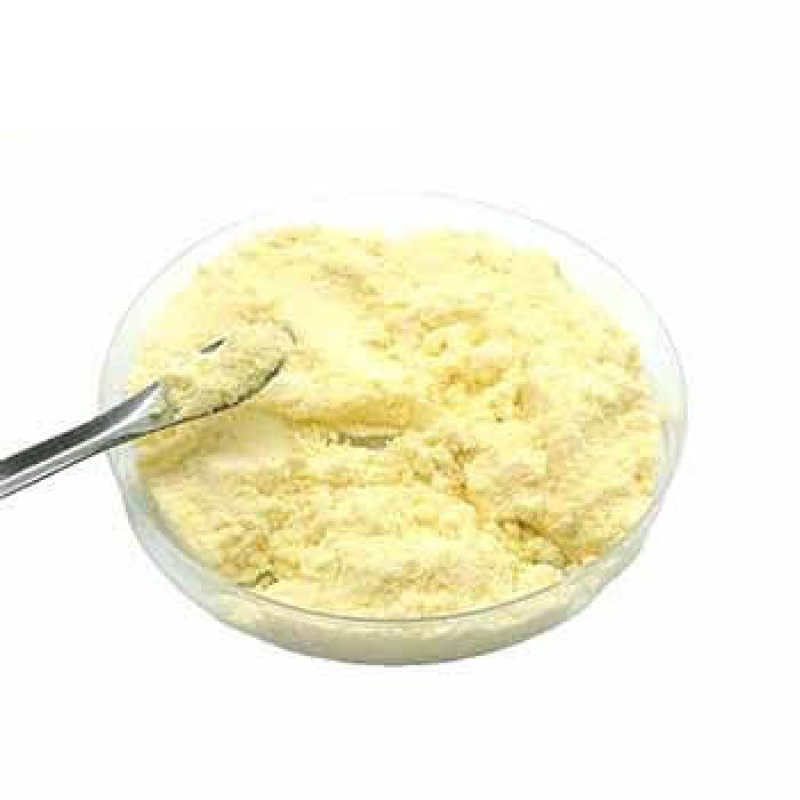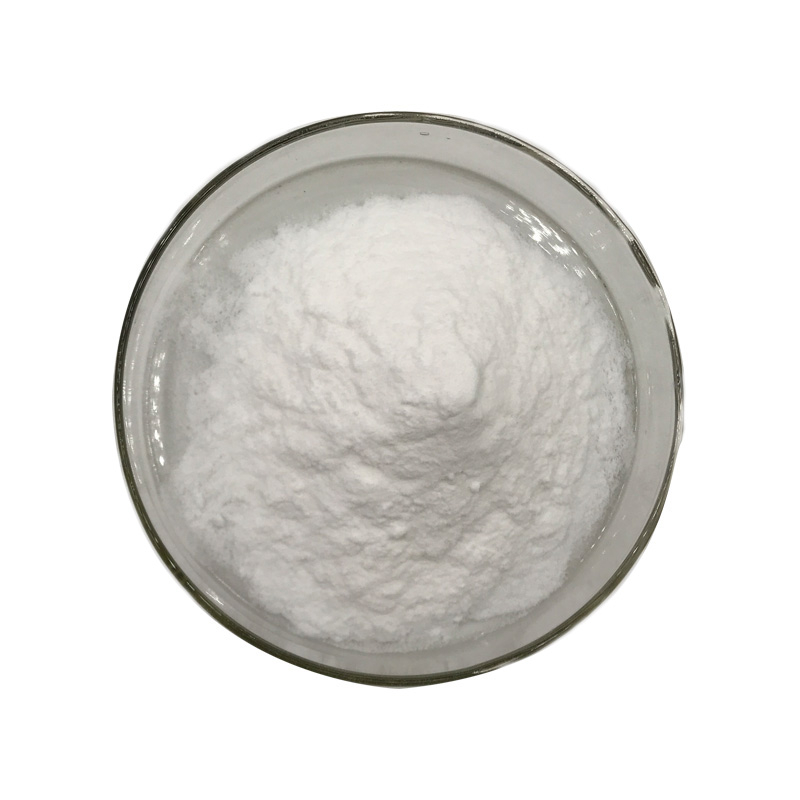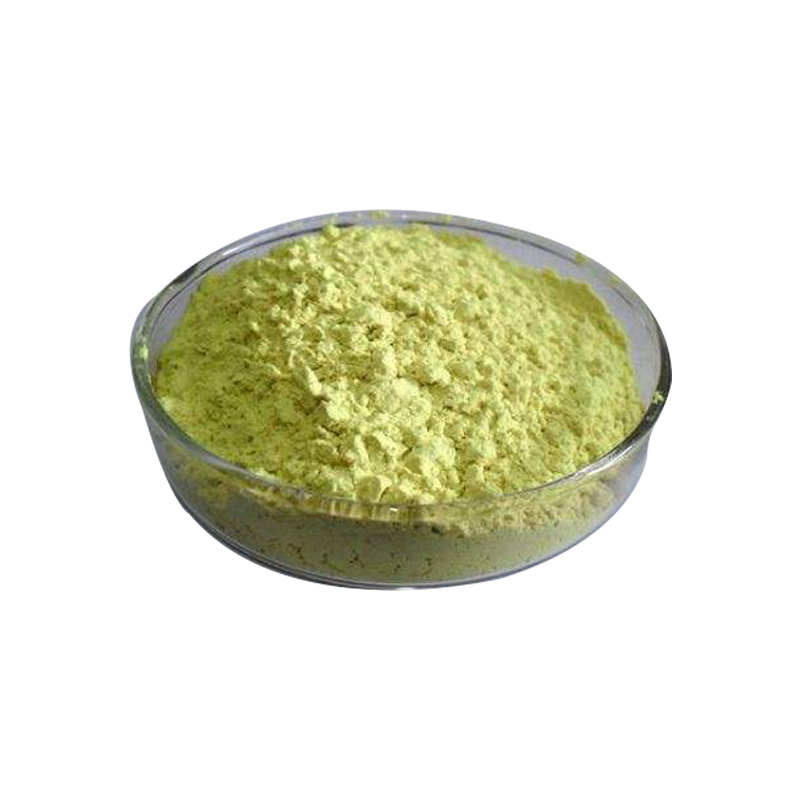Polymaleic Acid CAS#26099-09-2 Polymaleic acid is the homopolymer of maleic acid. It is very secure in presence of chlorine and different oxidizing biocides. It has correct scale inhibition and excessive temperature resistance properties. Therefore, it can be used in the water desalination plants. It is also an amazing calcium carbonate antiscalant upon excessive temperature and in the excessive alkaline cooling water systems.
Contact Now
Products Description of Kojic acid CAS#501-30-4Kojic acid, also known as kojic acid and kojic acid, is an organic acid with antibacterial effect produced by aerobic fermentation of glucose by Aspergillus candida at 30-32°C. Its molecular structure is a γ-pyrone with a substituent. Among the γ-pyrone compounds existing in nature, the only famous compounds are kojic acid and maltol. In 1907, Saito separated kojic acid crystals from rice koji. It was named by Yabuta in 1912 and its structure was determined in 1924.
Contact Now
Products Description of Oxalic Acid CAS#144-62-7Oxalic acid is an organic substance with the chemical formula H₂C₂O₄. It is a metabolite of organisms, a medium-strong acid, widely distributed in plants, animals and fungi, and plays different functions in different organisms. Studies have found that more than 100 plants are rich in oxalic acid, especially spinach, amaranth, beet, purslane, taro, sweet potato and rhubarb.
Contact Now
Products Description of 3,5-Pyridinedicarboxylic acid CAS#499-81-03,5-Pyridinedicarboxylic Acid, English name 3,5-Pyridinedicarboxylic Acid, is a chemical substance with molecular formula: C7H5NO4.3,5-Pyridinedicarboxylic acid Chemical PropertiesMelting point >300 °C (lit.)Boiling point 295.67°C (rough estimate)density 1.5216 (rough estimate)refractive index 1.6280 (estimate)storage temp. Sealed in dry,Room Temperaturesolubility 1.0g/lform Powderpka2.8(at 25℃)color White to almost whiteWater Solubility insolubleBRN 131640InChIInChI=1S/C
Contact Now
Products Description of 3-MERCAPTOPROPIONIC ACID CAS#107-96-03-Thiopropionic acid is a direct raw material in organic chemicals and is used in pharmaceutical intermediates and electronic chemicals; it is used as an intermediate in the pharmaceutical Fenal, and it is also used as a stabilizer for polyvinyl chloride.
Contact Now
Products Description of Acetic acid CAS#64-19-7Acetic acid, commonly known as acetic acid (AcOH), is named after the main component of vinegar and is one of the most important fatty acids. It generally exists in many plants in free form or in the form of esters in nature. Molecular formula CH3COOH. The brewing and use of vinegar has a history of thousands of years. There are records of vinegar making in ancient China. However, concentrated acetic acid was successfully developed by Stahl in 1700. Pure acetic acid is a colorless liquid with a pungent taste.
Contact Now
Products Description of Dehydroacetic acid CAS#520-45-6DHA is widely found in many deep-sea fish oils, as well as in marine algae and some terrestrial plants. DHA is an ω-3 type unsaturated fatty acid and an essential fatty acid for the body. mp44℃. It is very unstable to light, oxygen and heat, and is easily oxidized and cracked, so antioxidants should usually be added.
Contact Now
Products Description of Dinonylnaphthalenesulfonic acid CAS#25322-17-2Dinonylnaphthalenesulfonic acid is a chemical substance with the molecular formula C28H44O3S.Dinonylnaphthalenesulfonic acid Chemical PropertiesBoiling point 94-99 °Cdensity 0.852 g/mL at 25 °Crefractive index n20/D 1.465Fp 30 °Fstorage temp. 2-8°Csolubility H2O: insolubleCAS DataBase Reference25322-17-2(CAS DataBase Reference)EPA Substance Registry SystemNaphthalenesulfonic acid, dinonyl- (25322-17-2)Safety InformationHazard Codes F,Xn,NRisk Statements&nb
Contact Now
Products Description of C.I. Acid Black 194 CAS#61931-02-0Acid Black 194, dark brown powder, can be used for dyeing wool, silk, nylon, wool blended fabrics and direct printing of wool and silk fabrics, with rich color and good level dyeing. When used for dyeing wool and other fibers in the same bath, silk will be dyed, nylon will be seriously stained, and acetate fiber and cellulose fiber will be slightly stained.C.I.
Contact Now
Products Description of Sebacic acid CAS#111-20-6White flaky crystals. Slightly soluble in water, soluble in alcohol and ether.Sebacic acid Chemical PropertiesMelting point 133-137 °C (lit.)Boiling point 294.5 °C/100 mmHg (lit.)density 1.21vapor pressure 1 mm Hg ( 183 °C)refractive index 1.422Fp 220 °Cstorage temp. Store below +30°C.solubility ethanol: 100 mg/mLform Powder or Granulespka4.59, 5.59(at 25℃)color White to off-whiteOdormonoclinic prismatic tablets, wh.
Contact Now
Products Description of OXALIC ACID CAS#68603-87-2Oxalic acid standard solution is mostly used for quantitative detection of oxalic acid content in food and medicine. For example, oxalic acid standard solution can be used to determine the oxalic acid content in edible mushroom broth.
Contact Now
Products Description of Sulfuric acid CAS#7664-93-9Sulfuric Acid (CAS# 7664-93-9) is a potent, colorless, and odorless mineral acid with a wide range of applications across various industries. As a cornerstone in chemical manufacturing, it's instrumental in producing fertilizers, dyes, and pigments. Its strong dehydrating and oxidizing properties make it indispensable in metal processing and refining petroleum. In the laboratory, it's a versatile reagent for titration and sample preparation.
Contact Now
Diethylenetriaminepenta(methylene-phosphonic acid) Chemical PropertiesBoiling point 1003.3±75.0 °C(Predicted)density 1.35 (50% aq.)vapor pressure 0Pa at 25℃storage temp. Hygroscopic, -20°C Freezer, Under inert atmospheresolubility Aqueous Base (Sparingly), Waterform Oilpka0.59±0.10(Predicted)color Pale Yellow to BrownWater Solubility 500g/L at 25℃BRN 2068968InChIKeyDUYCTCQXNHFCSJ-UHFFFAOYSA-NLogP-3.4CAS DataBase Reference15827-60-8(CAS DataBase Reference)EPA Substance Registry SystemPhosphonic acid, [[(phosphonomethyl)imino]bis[2,1-ethanediylnitrilo
Contact Now
Products Description of Pivalic Acid CAS#75-98-9Tert-pentanoic acid is a very important chemical raw material and chemical reagent, as well as an important raw material and intermediate in organic synthesis. It is a white needle-shaped crystal at room temperature, with a melting point of 35.5°C, a boiling point of Chemicalbook 163.8°C, and a density (50°C) of 0.905g. /cm3, easily soluble in alcohol and ether, and difficult to hydrolyze.
Contact Now
Products Description of Metatitanic acid CAS#12026-28-7Titanic acid is an intermediate product of the sulfuric acid method for producing titanium dioxide.
Contact Now
Products Description of 4,5-epoxytetrahydrophthalic acid diglycidylester CAS#25293-64-5Colorless liquid4,5-epoxytetrahydrophthalic acid diglycidylester Chemical PropertiesBoiling point 447.4±45.0 °C(Predicted)density 1.406Factory and Equipment ShowFast delivery timeInventory 2-3 working days New production 7-10 working days
Contact Now
Products Description of (1S)-(+)-Camphor-10-sulphonic acid CAS#3144-16-9Optically active left- and right-handed camphorsulfonic acid is an important resolving agent for chiral isomer drugs.
Contact Now
Products Description of Pyridine-2,6-dicarboxylic acid CAS#499-83-2Pyridine-2,6-dicarboxylic acid is an important pharmaceutical synthesis intermediate with a wide range of uses. Pyridine-2,6-dicarboxylic acid exists naturally in bacterial spores, but the content is low, which cannot meet the demand, and it is not easy to extract. It is not conducive to industrial production and application.
Contact Now
Products Description of 2-Thiophenecarboxylic acid CAS#527-72-02-Thiophenecarboxylic acid is a kind of colorless crystal.
Contact Now
Products Description of 3,5-Bis-tert-butylsalicylic acid CAS#19715-19-6This product is white powder.
Contact Now
Products Description of Aminobutyric Acid CAS#56-12-2It is used in biochemical research and medicinally to treat various diseases caused by hepatic coma and cerebrovascular disorders. Pharmaceutical intermediates. 4-Aminobutyric acid has the effect of lowering blood lipids and is suitable for the treatment and prevention of various types of hepatic coma. It can treat poliomyelitis, cerebral hemorrhage, and can be used as an antidote for gas poisoning. Also used in biochemical research and organic synthesis. It can reduce blood ammonia and promote brain metabolism.
Contact Now
Products Description of Isonicotinic acid CAS#55-22-1Isonicotinic acid is also known as pyridine-4-carboxylic acid. White needle-shaped crystals. Odorless, can sublime. Molecular weight 123.11. Melting point 319℃. Slightly soluble in cold water, soluble in hot water, insoluble in alcohol, benzene, ether. It is an amphoteric compound, soluble in both acid and alkali. Soluble in hot water and ethanol, slightly soluble in cold water and ether.
Contact Now
Products Description of Clavulanic acid CAS#58001-44-8Clavulanate Potassium, trade name potassium clavulanate, is an oxopenicillin β-lactamase inhibitor, which is a β-lactam ring and a hydrogenated isoxazole ring.
Contact Now
Products Description of 2-Phosphonobutane-1,2,4-tricarboxylic acid CAS#37971-36-12-Phosphonobutane-1,2,4-tricarboxylic acid (PBTC) is the latest generation of internationally popular phosphonic acid. It is one of the most widely used and best-performing products in the compounding of high-efficiency scale and corrosion inhibitors. This product is particularly suitable for water conditions with high temperature, high hardness, high alkalinity, high pH, and high concentration ratio.
Contact Now


































